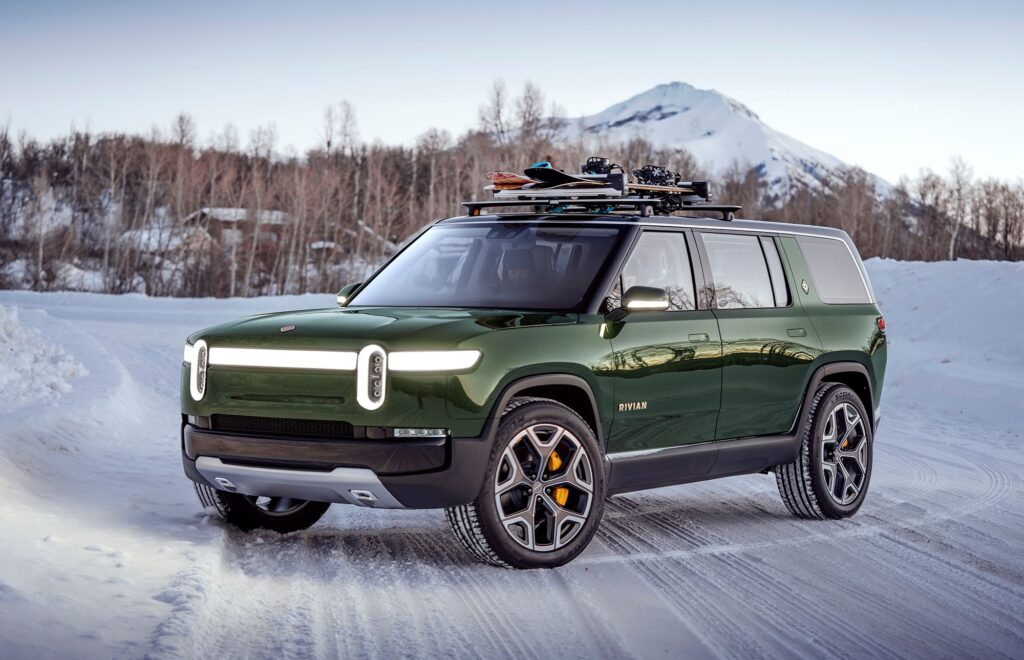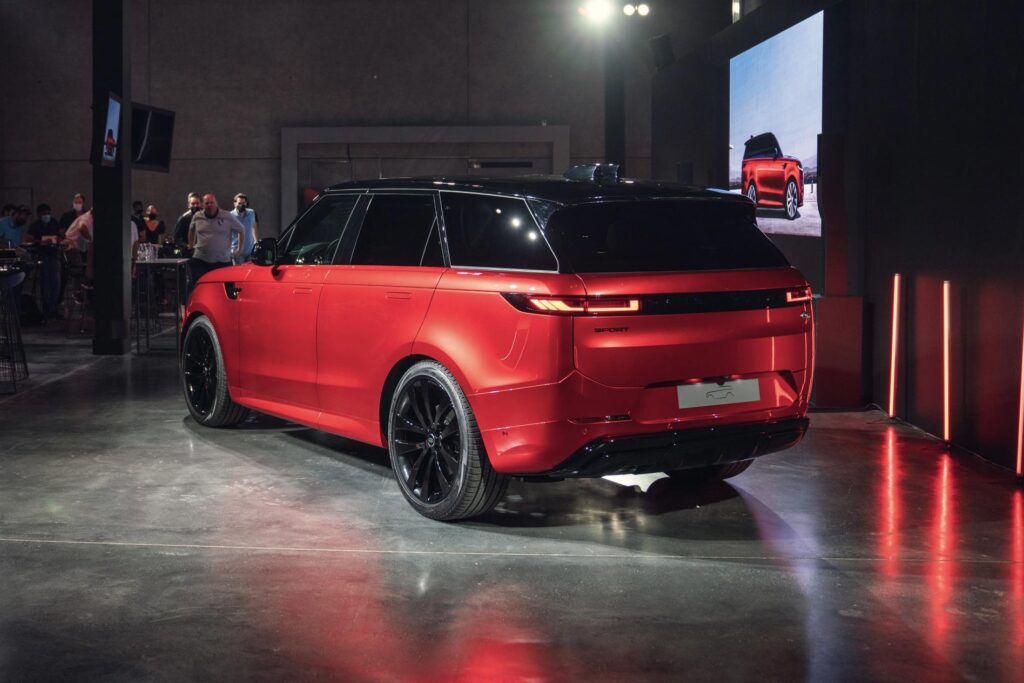The automotive industry is transforming and improving, and one of its most inspiring areas of development is the field of automotive lighting. New technologies not only enhance safety on the road but also allow for more efficient solutions to be used.
The future of automotive lighting is a topic of growing interest among automotive manufacturers. New technologies and trends in this area aim to extend the life and efficiency of lights, improve visibility on the road, and introduce innovative solutions that influence design and could revolutionie the way automotive lighting works.
In this article, we will take a closer look at the technologies and trends shaping the future of automotive lighting. We will explore their advantages and the potential challenges they present. We will also explore how innovations are impacting driver experience and road safety. We will be guided through the fascinating design world in the lighting section by expert Alexander Roman, Lighting Team Manager at Endego.
Trends in lighting design can be divided into two main categories: energy saving and miniaturization.
Energy saving is currently one of the most critical factors in lighting design and the automotive industry. Nowadays, car manufacturers are increasingly obliged to meet strict standards regarding ecological aspects. As a result, designers are seeking to minimize electricity consumption by introducing efficient solutions, such as energy-efficient LED light sources or motion-sensor-controlled lighting. With these innovations, a significant reduction in energy consumption can be achieved, which positively impacts the environment and improves energy efficiency.
The second major trend is the miniaturization of lighting. As technology advances, designers are working closely with engineers to develop new lighting solutions that allow more flexible use of lighting. We can create smaller, lighter, and more discreet front and rear lamps and interior lighting with increasingly compact solutions. This has aesthetic benefits and can translate into more space inside the vehicle or in the boot.
Innovations in these two areas are carried out based on several technological solutions and trends. Here are the most important of these.

One of the most important innovations in automotive lighting, which fits in with the trend for energy savings and miniaturization, is LED (Light Emitting Diodes) technology. LEDs have revolutionized the lighting industry with their high energy efficiency, long lifetime, and small dimensions. Car manufacturers are increasingly using LEDs to create headlights, tail lamps, and other automotive lighting components. Therefore, the future of automotive lighting will be inextricably linked to LED technology, which provides many benefits, such as increased safety, improved road visibility, and energy savings.
Increasingly sophisticated safety systems often require additional lighting. Integration of vehicle lighting is, therefore, another vital micro trend. For example, additional lighting integrated with a reversing camera provides better visibility behind the car. Conversely, an additional lighting system integrated into the steering system improves visibility during a turning manoeuvre.
Another significant trend is the development of adaptive car lights. Thanks to advanced sensors and cameras, such lights can automatically adapt their settings to road conditions. They can recognize other road users, illuminate a bend in front of the car, or change the shape and direction of the light beam to avoid blinding other drivers. This technology improves visibility, increases road safety, and minimizes the risk of accidents.
Car lights are becoming smaller and more unobtrusive, but this does not mean there will be fewer of them. The trend is to make the vehicle more visible from as many angles as possible. In the latest models, the lights already occupy the entire front and rear of the car, and it is likely they will soon also enter the sides of the vehicle. This will make the car more visible to other road users. The additional lights can already be found on some premium cars. When the doors are opened, they display shapes or animations on the ground. This solution helps to illuminate the road and avoid tripping.


The increasing popularity of autonomous cars means that communication between these vehicles, pedestrians, and other road users will be an essential issue. Car lighting can communicate, informing other users of the autonomous vehicle’s intentions. For example, LED systems can signal to a passing pedestrian that the car has noticed him or her and can stop. Another noticeable trend is the use of light indicators to show various information about the car’s status, such as the state of charge of the vehicle’s battery.
The major trends in the lighting sector – energy saving and miniaturization – present new challenges to automotive lighting designers. Complex electronics or the efficiency of optical systems are just some of them.
One of the main issues designers face is ensuring maximum energy savings while maintaining adequate luminous performance. For outdoor lighting, the lamp must have the correct brilliant values but not consume too much current. Designers, therefore, need to develop mechanical-optical systems that provide adequate luminosity and maximum energy efficiency while remaining within legal standards.
Another challenge is miniaturization. Nowadays, as technology constantly evolves, customers expect increasingly compact and aesthetically pleasing solutions. Therefore, designers must develop systems that meet customers’ requirements regarding lamp size and weight while providing optimal lighting performance.

As new technologies are applied, electronics are becoming more complex. Animations and LEDs are gaining popularity, giving designers more options for creating lighting. Unfortunately, the increasing complexity of the circuits requires more electronics specialists to be involved in the project, which adds to the cost. Not every company can afford this.
Addressing these challenges is critical in creating modern lighting that meets customer expectations and complies with regulations and sustainability principles. Given the rapid technological advances, imagination, knowledge, and money are increasingly the only constraints. To improve your chances in a competitive market, it makes sense to partner with specialized experts. As an experienced automotive partner, the Lighting Endego team can help companies in the automotive industry. We specialize in designing practical and aesthetically pleasing automotive lamps. We have more than ten years of experience and have many projects to our credit completed for the world’s leading car manufacturers.

We offer companies in the automotive industry the services of qualified and experienced employees. Endego guarantees that every order carried out by our specialists will be completed with the utmost care and professionalism. We also offer holistic project implementation, from conception to the start of lamp production. Our team consists of experts with extensive knowledge in design, mechanics, optics, and electronics. This ensures that our solutions are perfectly tailored to your needs and meet the highest quality standards. With us, you are assured that your lamps will not only be effective in terms of lighting and energy efficiency but also fully compliant with legal standards and the latest trends in automotive design, allowing your company to stand out in the market. Contact our expert today!
Rolling stock modernisation is becoming an increasingly attractive alternative to purchasing new vehicles, especially with rising costs, budget constraints and the need to operate in line with sustainable development principles. When does modernisation make sense and how can it be carried out effectively?
Read moreToday, bumpers are much more than just components that protect against the effects of collisions. They are advanced components that combine safety, aerodynamics, aesthetics and integration with electronic systems. How are they designed and why are they so important in modern vehicles?
Read moreModern trains are not just means of transport, but also embody innovation and safety. The design of the front end and car body combines aesthetics with advanced engineering and European standards. How does the appearance of a train affect its aerodynamics, energy consumption, safety and brand image? Here’s what’s behind the modern design of rolling stock.
Read more